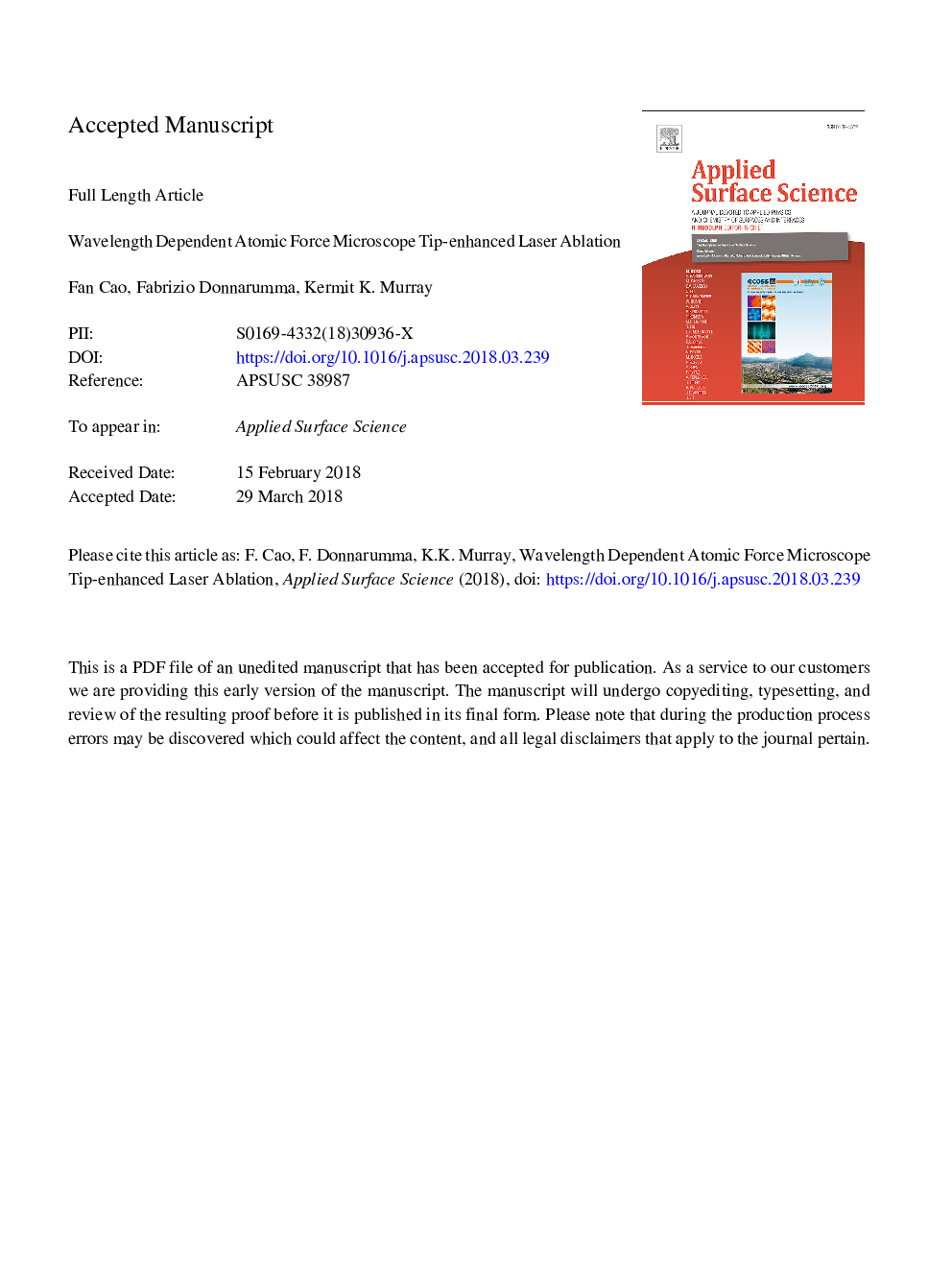| Article ID | Journal | Published Year | Pages | File Type |
|---|---|---|---|---|
| 7834108 | Applied Surface Science | 2018 | 24 Pages |
Abstract
The role of laser wavelength in atomic force microscopy (AFM) tip-enhanced laser ablation was studied using an apertureless tip and a nanosecond pulsed laser. An optical parametric oscillator (OPO) laser wavelength tunable from 410 to 2400â¯nm was used to irradiate a gold-coated silicon AFM probe held 15â¯nm above the surface of an anthracene film. The absorption of laser energy by the tip at 532â¯nm is sufficient to melt the gold coating and increase the diameter of the tip from about 100â¯nm to approximately 1â¯Âµm. The ablation crater volume was measured and found to have a maximum at 500â¯nm and an approximately linear drop to 800â¯nm. Craters could not be produced between 800 and 1200â¯nm and the crater was slightly smaller at 450â¯nm compared to 500â¯nm. A crater rim was observed with a volume comparable to that of the crater but lower density. The mechanism of ablation is postulated to be the result of energy absorption by the tip through plasmon resonance of the gold coating followed by melting of the anthracene by ballistic, contact, or radiative heating of the anthracene film.
Related Topics
Physical Sciences and Engineering
Chemistry
Physical and Theoretical Chemistry
Authors
Fan Cao, Fabrizio Donnarumma, Kermit K. Murray,
